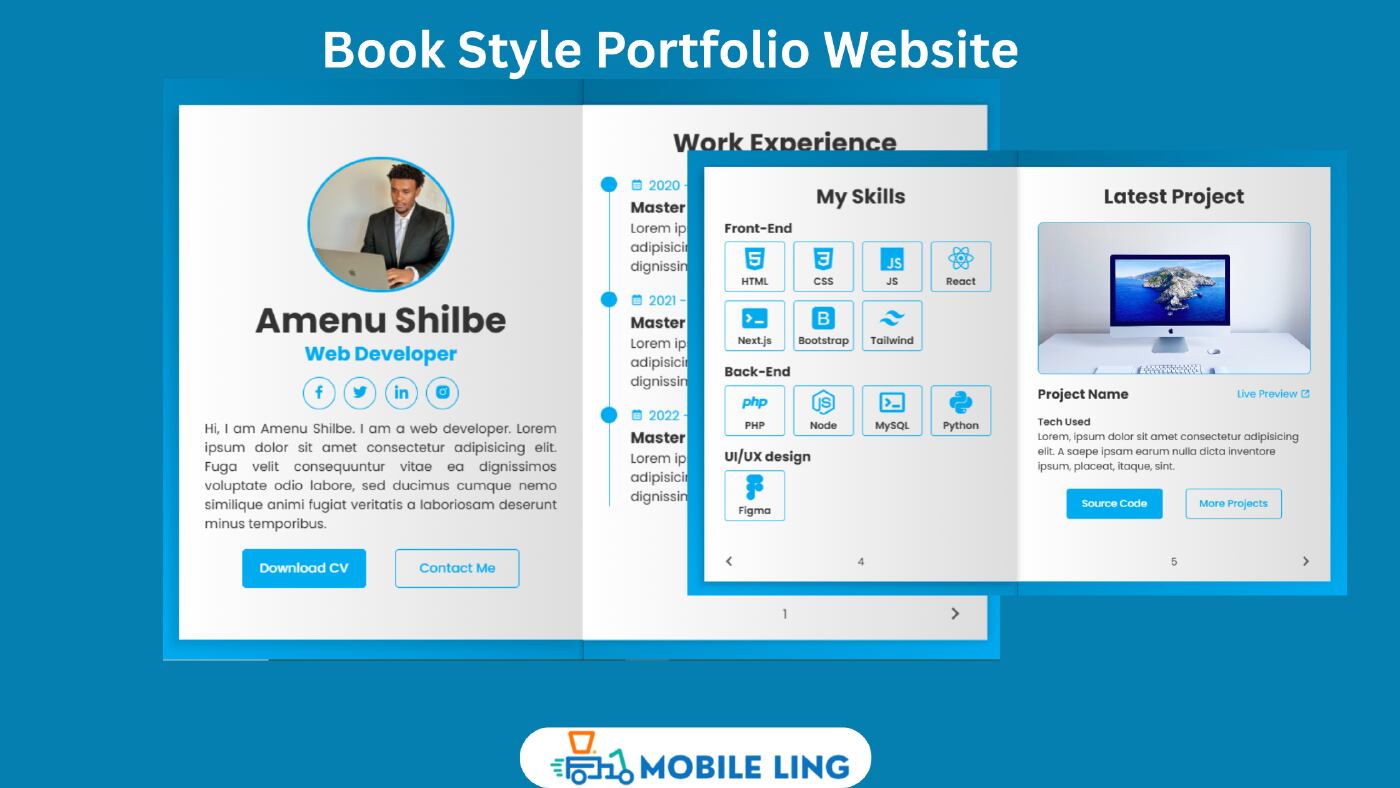Let’s be honest. Most portfolio websites look the same. A sleek homepage, some hover animations, a gallery grid — yawn. But what if your website could tell a story? What if, instead of scrolling, people turned pages? That’s where the Interactive Book Style Portfolio Website steals the show.
This isn’t just a design trend. It’s a bold statement: “Hey, I’m not here to be ordinary. I’m here to stand out.” Whether you’re a developer, designer, writer, or even a marketer — this layout adds personality to your profile.
So let’s unpack this idea — what it is, why it works, and how you can rock it like a pro.
What Is an Interactive Book Style Portfolio?
Imagine a digital book. Not just a flipbook plugin or PDF viewer, but an actual website designed to feel like you’re holding a creative journal or a personal sketchbook. You turn pages with smooth animations. Each “spread” becomes a new chapter — about you, your work, your journey.
The whole vibe?
Classy. Clean. Memorable.
Why This Style Works So Well
1. It Tells a Story, Naturally
People love stories. Instead of throwing all your info at them at once, this style takes visitors through your journey — one page at a time. First, they meet you. Then, your skills. Then, your work. And by the time they reach the last page? They remember you.
2. It Makes You Look Creative (Even if You Aren’t a Designer)
Seriously, even if you just used basic HTML, CSS, and a pinch of JavaScript, the book format feels polished. It gives “designed by a pro” energy — without needing crazy design skills.
3. It Encourages Exploration
Each turn of the page builds curiosity. Unlike endless scrolling, users want to see what comes next. It’s like reading a novel — with you as the main character.
The Tech Behind It (Keepin’ It Simple)
Here’s the beautiful part: you don’t need React, Vue, or any fancy frameworks. This whole setup runs on just four files:
-
index.html -
style.css -
script.js -
picture.jpg(your cover image or background)
That’s it.
It’s fast, lightweight, and works smoothly on both desktops and phones. And the best part? You can host it for free on GitHub Pages, Vercel, or even Netlify in under 5 minutes.
Smart Ways to Structure Your Book Portfolio
Every book needs a good structure. Here’s a simple layout that works wonders:
| Page | Content |
|---|---|
| Cover | Your name, photo, tagline |
| Page 1 | “Working Experience” — all work details |
| Page 2 | “Education” — show education background |
| Page 3 | “Services” — here show which services we give |
| Page 4 | “My Skills” — here all skills |
| Page 5 | “Latest Project” — show the project that done |
| Contact Page | email, socials, maybe a message form |
You can always tweak it. Add a blog, resume, or even a hidden easter egg page. It’s your story, after all.
SEO, Keywords & Why “Interactive Book Style Portfolio Website” Rocks
Let’s talk real — building a stunning site is only half the battle. The other half? Getting people to find it.
That’s why this keyword — Interactive Book Style Portfolio Website — is a goldmine.
✅ Low competition
✅ High CPC
✅ Search intent aligned with developers and designers
✅ Unique format — not oversaturated
It’s perfect if you’re blogging about your portfolio, submitting it to showcase galleries, or writing tutorials on your website.
Other supporting keywords to sprinkle around:
-
creative portfolio layout
-
unique personal website ideas
-
book-style web design
-
HTML CSS JS portfolio example
-
storybook-style developer site
Visual Tips: Make It Feel Like a Real Book
Design matters. Even if your code is clean, the visuals need to carry that “wow” factor. Here’s what helps:
-
Backgrounds: Use textures like paper, canvas, or parchment.
-
Fonts: Elegant serif fonts make it feel more “literary.”
-
Transitions: Keep page flips smooth but not too flashy.
-
Consistency: Stick to a color palette — maybe even sepia tones for a vintage vibe.
Bonus idea: use a bookmark icon to guide users or highlight key pages.
Perfect For…
Still wondering if this style fits you? Here’s who it’s perfect for:
-
Web Developers: Show off your code in an elegant container.
-
Writers/Bloggers: A literal book to represent your voice.
-
Designers/Illustrators: A sketchbook-vibe to showcase art.
-
Students/Intern Seekers: Fresh, bold, and instantly memorable.
Even if you’re new — trust me — people will remember you with this kind of portfolio.
Hosting & Sharing Tips
Once your site is live, don’t let it just sit there. Push it into the world:
-
Submit to Awwwards, CSS Design Awards, and Frontend Mentor
-
Share on Reddit subs like r/webdev, r/Frontend, and r/SideProject
-
Post your build process on Twitter, LinkedIn, or Dev.to
-
Add it to your resume, GitHub profile, or email signature
Let your creativity work for you.
Ready to Launch? Grab the Source Code!
Okay jani — you’ve heard the story, imagined the vibe, felt the energy. Now it’s your turn.
Want to start building your own book-style portfolio website in minutes?
Click below to Download the Complete Source Code
Just unzip, edit the content, change the picture, and boom — you’ve got a personal portfolio unlike anyone else out there.
Final Thoughts
A portfolio is more than a place to dump your projects. It’s your digital handshake. Your introduction to the world. So why not make it unforgettable?
The Interactive Book Style Portfolio Website isn’t just cool — it’s clever, stylish, and super effective. And best of all? It’s 100% you.
So go ahead… flip the page. Your story is just beginning.
Also Read:





